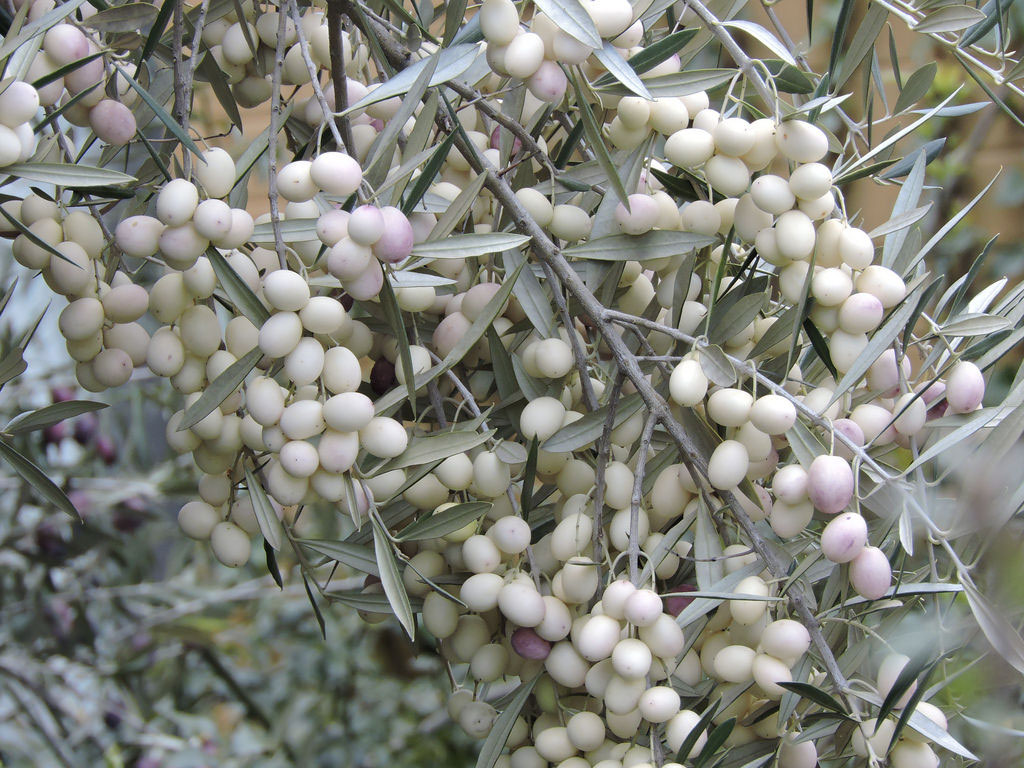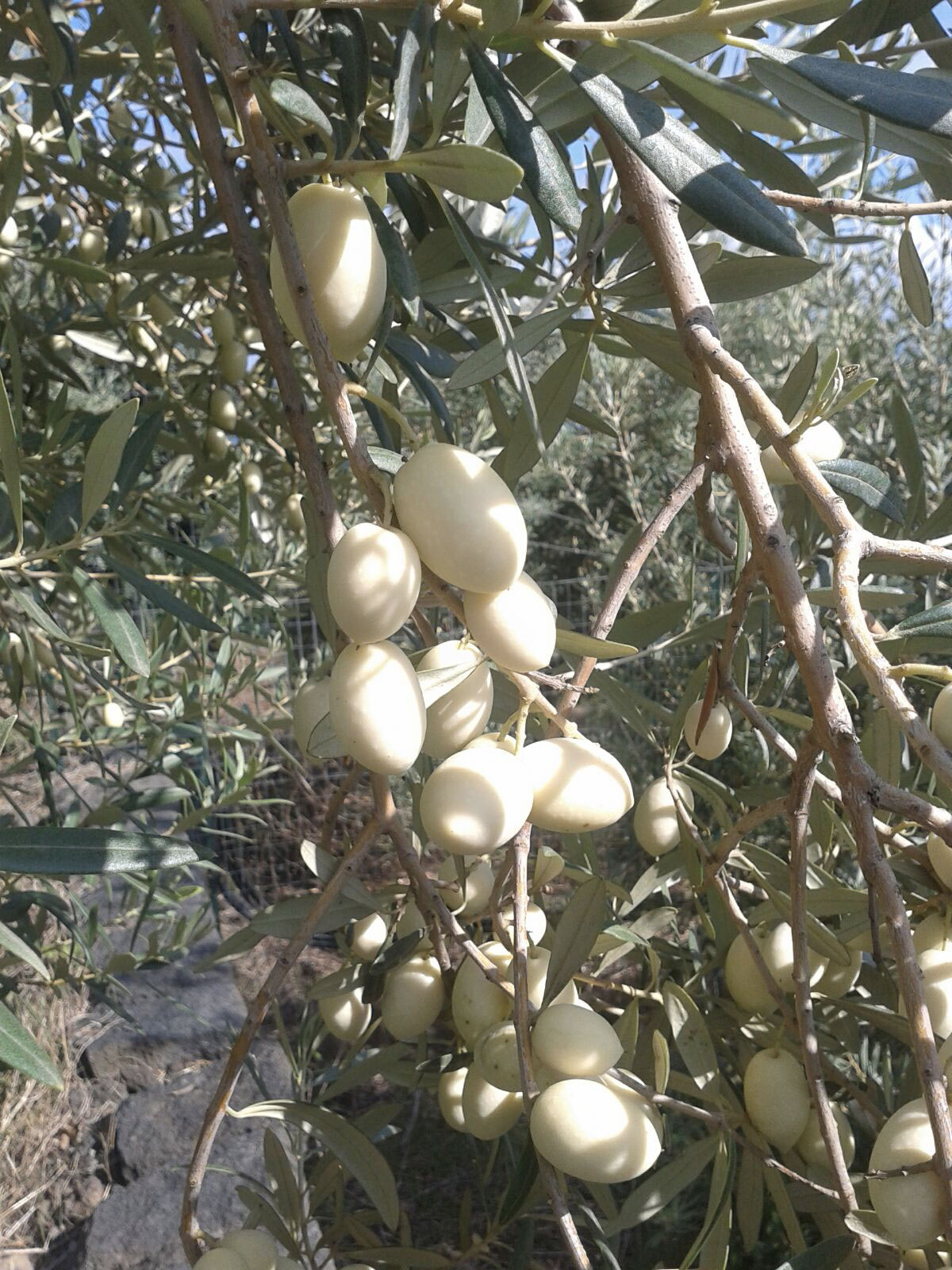
Το Leucocarpa, που ονομάζεται επίσης Leucolea, είναι μια ποικιλία ελιάς που χαρακτηρίζεται από μικρά φρούτα τα οποία, κατά την ωρίμανση, παίρνουν
λευκό χρώμα ελεφαντόδοντου.
"Κυρίως διαδεδομένη στις περιοχές της νότιας Ιταλίας, με ισχυρή παρουσία
στην Καλαβρία, πιθανότατα εισήχθη κατά τη διάρκεια του αποικισμού της
Magna Graecia",
ανέφερε ο Innocenzo Muzzalupo, ερευνητής στο Συμβούλιο Αγροτικής Έρευνας και Οικονομίας, Ερευνητικό Κέντρο για την Ελιά, τα εσπεριδοειδή και τα δένδρα (CREA-OFA), δήλωσε στους Olive Oil Times.
Λόγω του λευκού χρώματος των φρούτων, το οποίο στη δυτική κουλτούρα συμβολίζει την αγνότητα, κατέληξε να χρησιμοποιείται κυρίως για θρησκευτικούς σκοπούς.

"Το εξαιρετικό παρθένο ελαιόλαδο που παράγεται από αυτή την ποικιλία έχει
τα ίδια χαρακτηριστικά με όλα τα άλλα όσον αφορά τη σύνθεση των λιπαρών οξέων, των γεύσεων και των αρωμάτων που είναι χαρακτηριστικό ενός ελαφρού φρουτώδους προϊόντος", διευκρίνισε.
"Ένας μικρός αριθμός παραγωγών το χρησιμοποιούν σε μείγματα με άλλες κυρίαρχες ποικιλίες, αλλά λόγω του λευκού χρώματος των φρούτων, το οποίο στη δυτική κουλτούρα συμβολίζει την αγνότητα, κατέληξε να χρησιμοποιείται κυρίως για θρησκευτικούς σκοπούς." That is why Leucocarpa is often grown
near convents, where its oil, after receiving a blessing, is intended for the sacraments and other Catholic rites and, in the past, to anoint the emperor during the coronation ceremony.
This is further evidence of how ancient people, independently of their creed, associated the olive tree and olive oil with sacredness,
as happened in Athens,and many other places throughout the Mediterranean basin, to such an extent that nowadays the olive tree is universally considered a symbol of peace.

Going back to Leucocarpa, genetic characterization established that it
belongs to a unique strain, whose limited spreading is probably due to
uneasy propagation. Then, farmers take good care of these olive trees,
which during fruit-bearing season give a ravishing aesthetical effect, which according to a study conducted by Muzzalupo with other researchers of CREA and the University of Calabria, is due to a “switch-off”
of flavonoids and anthocyanins.
“Olive ripening involves two phases: first, the passage and synthesis
of chlorophyll which causes the fruit to be green, then the degradation
of chlorophyll when the olive lose its color,” our researcher explained.
“At the same time, generally, in olives as in most fruits, the synthesis
of anthocyanins and other flavonoids is activated, and this causes their
bluish or blackish color.”
We should recall that some varieties, during the first part of drupe ripening, takes on a very pale shade of green which is nearly white. For example, Biancolilla, whose name recalls the color white (Bianco in Italian), is improperly called Leucocarpa in some areas, because after chlorophyll degradation, fruits remain light-colored even twenty days until the pigdos are activated.

“In the Leucocarpa cultivar, flavonoids and anthocyanin activation does not occur at all,” Muzzalupo explained. “This is the only variety which remains
white at any stage of maturation, and if we leave the fruits on trees until
late winter, we will find them white, at most tending to yellowish due to
the oxidation of lipids. In our study we tried to understand why this happens”
The researchers found that the transcription of specific genes is blocked at
the level of certain enzymes by a process of regulation; then, they discovered which regulatory mechanisms occur, through specific microRNAs. This latter finding led to the publication of the research ‘Deep sequencing of olive short RNAs identifies microRNAs targeting involved in drupe ripening.’
“The characterization of transcripts from flavonoid and anthocyanin biosynthetic pathways and the analysis of their expression level in olive fruits is an important goal, not only to understand the veraison event of fruits, but also to increase the knowledge on these antioxidant molecules, which are important for human health,” Muzzalupo noted.
He also reported the result obtained by milling this variety with a Keurig-like device called Revoilution.
“We pitted Leucocarpa olives and froze the pulp in liquid nitrogen; then we crushed it and put it into the machine,” the researcher explained. “Basically, completely avoiding oxidation, we obtained a great medium fruity extra virgin olive oil with ideal organoleptic characteristics, which had the sole particularity of being colorless. It was very good, with a pleasant spicy and bitter taste.”

- https://www.oliveoiltimes.com/olive-oil-making-and-milling/leucocarpa-the-
dazzling-white-olive-from-magna-graecia/64475

Δεν υπάρχουν σχόλια:
Δημοσίευση σχολίου